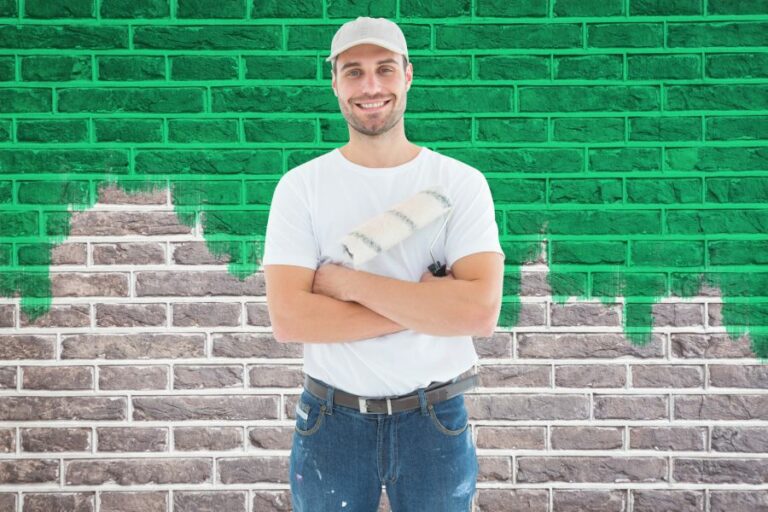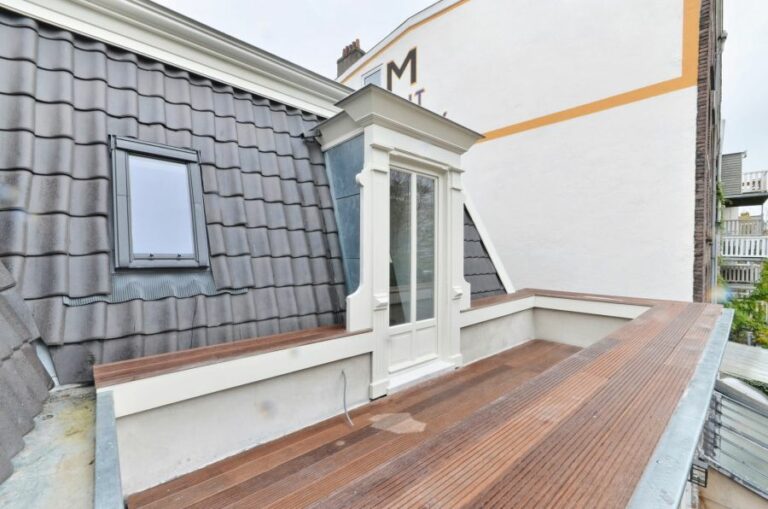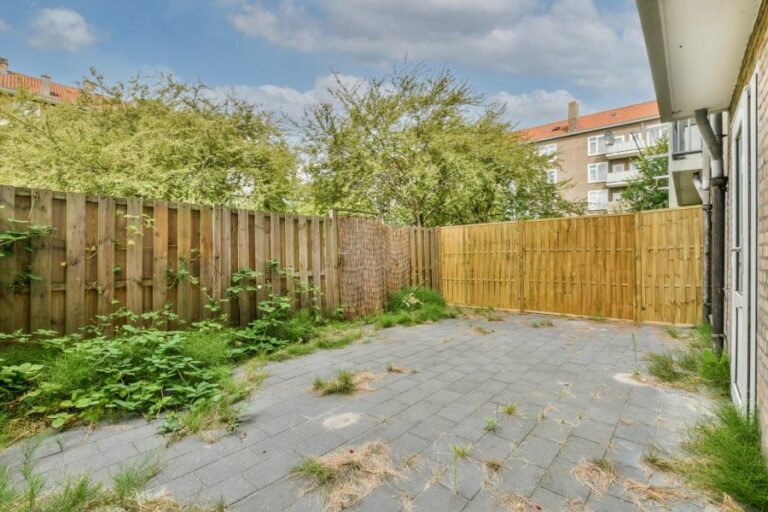Outdoor Patio Paint Colors, 25 Things You Should Know
Let’s explore the magical world of outdoor patio paint colors! Transforming this forgotten space into an enchanting retreat can ignite creativity and expand your living area. With a simple brush or spray can stroke, let us help you break free from the monotonous shades and embrace the spectacular fusion of art and design.
Outdoor patio paint colors:
Neutral tones like beige, gray, and off-white are timeless and versatile, while vibrant hues like turquoise, sage green, coral, and mustard yellow add personality. To choose the perfect color, consider the surroundings and patio size and test before committing. Using high-quality exterior paint, proper surface preparation, and applying a primer and multiple coats will ensure a beautiful and long-lasting finish.

Unveil the perfect color palette for your outdoor oasis as we explore popular paint options, timeless hues, and expert tips. Transform your patio into an inviting, stylish space with my top color recommendations tailored to complement any design taste.
Contents
- 1 Exterior Patio Paint Color Options
- 2 Which color would be best to paint my outdoor patio?
- 3 Which Kind of Paint is Most Suitable for an Outdoor Patio?
- 4 What are the best color choices for painting a concrete patio?
- 5 What is the Optimal Color Choice for Painting a Porch?
- 6 What Type of Paint Should Be Used on an Outdoor Porch?
Exterior Patio Paint Color Options
Outdoor patios are an extension of your home and should reflect your personal style and taste. Choosing the right paint colors can transform your patio into a welcoming and inviting space where you can relax, entertain, and enjoy the outdoors.
• Neutral Tones: Timeless and Versatile
Neutral shades such as beige, gray, and off-white are classic choices for outdoor patio paint colors. These colors work well in almost any design scheme and can provide a calming effect. Here are some neutral tones to consider for your patio:
1. Beige and Tan
- Soft Beige: This subtle and warm color is perfect for creating a cozy and inviting atmosphere on your patio. It pairs well with various shades of brown, green, and blue.
- Tan: A rich, dark tan is an excellent choice for modern or Mediterranean-style patios. The shade provides depth and can create a striking contrast with bright or white furniture.
2. Gray
- Light Gray: A versatile choice for many design styles, light gray works well with pops of color from your patio furniture and accessories.
- Charcoal Gray: This deep, bold shade is perfect for contemporary patios, as it adds drama and creates a striking contrast with lighter elements in your space.
3. Off-White
- Cream: A soft, warm cream shade is ideal for a traditional patio, evoking a sense of comfort and relaxation.
- Cool White: A crisp, clean white with cool undertones is perfect for modern patios, providing a sleek and sophisticated look.
• Vibrant Hues: Adding Personality to Your Outdoor Space
If you’re looking to make a statement with your outdoor patio paint colors, consider using bold and vibrant hues. These shades can give your patio a lively and fun atmosphere. Here are some popular color choices to consider:
1. Blues and Greens
- Turquoise: This cheerful and bright color is reminiscent of the ocean, making it a perfect choice for beach-style patios.
- Sage Green: This earthy, muted green adds a touch of nature to your patio and pairs well with rustic, boho, or farmhouse styles.
2. Reds and Yellows
- Coral: This warm and inviting shade is an excellent choice for patios with a tropical or coastal vibe.
- Mustard Yellow: This bold and energetic hue adds a splash of sunshine to your patio, perfect for a contemporary or eclectic design scheme.
• Tips for Selecting the Perfect Patio Paint Color
- Consider your surroundings: Observe the colors present in your outdoor setting, such as the colors of your landscaping, the exterior of your home, and your patio furniture. Choose a color that complements and enhances these elements.
- Factor in the size of your patio: Lighter shades will make a small patio appear larger, while darker colors can create a cozy and intimate atmosphere in expansive patios.
- Test before committing: Purchase a small paint sample and test it on a discrete area of your patio. Observe how the color looks during different times of the day and under various lighting conditions to ensure it’s the right choice.
• Application Tips and Best Practices
- Choose the right paint: Select a high-quality exterior paint that is specifically designed for outdoor surfaces. These paints are formulated to withstand harsh weather conditions and maintain their color and durability.
- Surface preparation: Properly clean and prepare your patio surface before painting. Remove dirt, debris, mold, and mildew to ensure that the paint adheres properly to the surface. Power washing can be a useful tool for this task.
- Primer: Apply a high-quality primer to ensure an even and long-lasting finish. This step is especially important if you’re covering a dark or bold color with a lighter shade.
- Apply multiple coats: Depending on the paint color and patio surface, you may need multiple coats to achieve a uniform and smooth finish. Allow each coat to dry thoroughly before applying the next one.
In conclusion, selecting the right outdoor patio paint colors can significantly enhance the look and feel of your outdoor space. You can choose a color that perfectly complements your outdoor oasis by considering factors such as your design style, existing elements, and patio size.
Lastly, taking the time to prepare and apply the paint properly will ensure a beautiful and long-lasting finish.
Which color would be best to paint my outdoor patio?
The outdoor patio is a space for relaxation, entertainment, and enjoying the beauty of nature. When it comes time to paint your patio, choosing the right color can make all the difference in the world.
• The Importance of Color Coordination
Before diving into the wide array of paint colors available, take the time to consider your home’s exterior and surrounding landscaping. This can provide inspiration and help you select a color that accentuates your existing design.
– Matching Your Home’s Exterior
The exterior of your home is an essential factor to consider when selecting a paint color for your outdoor patio. The patio color should complement your home’s exterior finish and architecture without clashing or becoming an eyesore. Here are some tips:
- For brick homes, consider earth tones, such as beige, light brown, or rust, to harmonize with the natural look of the brick.
- If you have a grey or white house, you have more flexibility to play with bold colors but remain mindful of the property’s overall look.
- For homes with wood siding, choose earthy or neutral colors that complement the wood’s natural grain and tone.
– Considering Your Landscaping
The plants, trees, and flowers surrounding your patio can also inspire your color choice. If your landscaping is lush and vibrant, you might opt for softer, more natural colors that let the greenery take center stage.
On the other hand, if your outdoor area is fairly minimal or lacking in color, feel free to experiment with bold hues that add pops of visual interest.
• Popular Outdoor Patio Colors
While personal preference plays a significant role in selecting the right paint color for your patio, there are several popular choices that work well for many outdoor spaces:
– Neutral Tones
Neutral tones are versatile and timeless, allowing you to easily update your patio’s look with changing seasons or trends. Some popular neutral colors for outdoor patios include:
- Beige: This subtle shade adds warmth and pairs well with almost any other color.
- Grey: A light or medium grey can provide a modern, clean look that works well with contemporary architecture.
- Taupe: This sophisticated neutral can offer a luxurious feel while still remaining versatile.
– Earthy Hues
Earthy hues can provide a natural and inviting atmosphere, blending seamlessly with the surrounding landscape. Here are some earth-toned color ideas:
- Olive green: A rich olive green can create a serene atmosphere and pair nicely with lush landscaping.
- Rust: This deep reddish-brown color lends a cozy, rustic feel and works especially well with brick homes.
- Terracotta: This warm, Mediterranean-inspired color can instantly transport you to the Italian countryside.
– Vibrant and Bold
For those who want to make a statement with their patio color, there are plenty of bold options available:
- Blue: From deep navy to bright turquoise, blue can convey anything from tranquility to energy, depending on the shade.
- Red: A rich, daring color like I recommend burgundy can add drama and sophistication to your patio space.
- Yellow: A sun-soaked hue, as I recommend, goldenrod can bring warmth and happiness to any outdoor space.
• Tips for Testing and Selecting Patio Paint Color
To ensure you make the right color choice for your outdoor patio paint, here are a few helpful tips:
- Gather paint swatches: Pick up several swatches in the color family you’re considering so that you can narrow down your preferences.
- Test samples: Purchase small sample cans of your top choices and paint a small section or piece of cardboard that can be placed in the patio area. Observe how the color looks at different times of day, as lighting can greatly impact the appearance.
- Consider the size of your patio: Lighter colors can make small spaces appear larger and more open, while darker shades can create a cozy, intimate atmosphere in a large patio.
• In Conclusion
Painting your outdoor patio is an excellent opportunity to showcase your creativity and personal style. By considering your property’s surrounding architecture, landscaping, and overall aesthetic, you can confidently select the perfect color to enhance your outdoor living space.
Whether you choose a neutral tone, an earthy hue, or a bold and vibrant shade, the right paint color can transform your outdoor patio into a beautiful and welcoming retreat.
Which Kind of Paint is Most Suitable for an Outdoor Patio?
Create the perfect ambiance for your outdoor patio with the right type of paint. Here, we explore various options to help you determine the ideal paint for your patio, whether it’s a dining area, a garden retreat, or a poolside lounge.
• Decoding the Formula: What Makes Patio Paint Special
Outdoor patio paints are designed to provide extra durability and a smoother finish to withstand the natural elements. Here are some fundamental characteristics to consider when choosing a paint for your patio:
– UV Resistance
Sun exposure causes colors to fade and paint to crack. Look for a paint that offers protection against harmful UV rays.
– Water Resistance
Exposure to rain and moisture can cause paint to chip and peel. Waterproof or water-resistant paint will help your patio maintain its original look for an extended period.
– Resistance to Mold and Mildew
Mold and mildew can cause patio surfaces to become slippery and unsafe. Ensure that the paint you choose contains antimicrobial agents that inhibit the growth of mold and mildew.
– Chip and Scuff Resistance
As outdoor spaces get significant foot traffic, choosing a paint that doesn’t chip or scuff easily is essential.
• The Ideal Paint Options for Your Outdoor Patio
Now that you have clarity on the essential characteristics of patio paint, here are the top paint options available in the market:
– Acrylic Paint
Acrylic paint stands out as one of the best paint options for outdoor patios due to its durability and water resistance. It leaves a smooth, even finish that is long-lasting, can withstand wear and tear, and resist cracking and fading.
Acrylic paint comes in various colors and finishes to suit your specific preferences, such as flat, semi-gloss, or glossy.
Pros:
- Dries quickly
- Highly versatile with various colors and finishes
- Water-resistant and durable
Cons:
- Slightly expensive compared to other paints
- Prone to scratches and scuffs
– Epoxies
Epoxy paints are known for their durability and resistance to chemicals, making them an excellent choice for patios that see a lot of foot traffic or are near a swimming pool. Epoxies bond well with surfaces and are designed to withstand harsh outdoor conditions.
Pros:
- High durability and longevity
- Resistant to chemicals, UV rays, and water
- Bonds well with surfaces
Cons:
- Longer drying time compared to acrylic paint
- Requires a meticulous surface preparation process
– Elastomeric Paint
Elastomeric paint is made from a high-quality acrylic resin that expands and contracts with temperature fluctuations.
This characteristic makes it resistant to cracking, fading, and peeling. Elastomeric paints are breathable, waterproof, and can be applied to various surfaces, such as concrete or brick.
Pros:
- Excellent flexibility and crack resistance
- Breathable and waterproof
- Can be applied to a variety of surfaces
Cons:
- Takes longer to dry
- May require several coats for optimum results
– Concrete and Masonry Paints
Concrete and masonry paints are specially designed for use on concrete and brick surfaces, both of which are common for patios. These paints are formulated with acrylic or latex resins, ensuring resistance to water, UV rays, and mildew.
They also contain a high level of binders that provide flexibility and durability.
Pros:
- Resistant to water, UV rays, and mildew
- Contains strong binder content for flexibility and durability
- Formulated specifically for concrete and brick surfaces
Cons:
- May require a primer for proper adhesion
- May not be ideal for other patio surfaces
• Expert Tips for Painting Your Patio
Keep these expert tips in mind while painting your outdoor patio to ensure the best results:
- Clean and prep the surface thoroughly to ensure proper paint adhesion.
- Choose a mild, dry day for painting as extreme temperatures or humidity can impact the paint’s ability to dry correctly.
- Use a primer specifically designed for your patio’s surface for the best results.
- Apply thin coats of paint and allow them to dry thoroughly between coats.
- If applying a sealant, ensure it’s compatible with your chosen paint.
• In Conclusion
Whether you have a concrete, brick, or wooden patio, selecting the right type of paint is crucial to ensuring your patio remains beautiful for years to come.
When deciding the best paint choice for your patio, consider factors such as durability, water resistance, UV protection, and resistance to mold and mildew.
Choose a paint that suits your patio’s specific requirements and desired aesthetic. With the right paint on hand, take time to refresh your outdoor retreat and create a space for relaxation and enjoyment.
What are the best color choices for painting a concrete patio?
A concrete patio can be a great addition to any home, providing a durable and versatile outdoor space for entertaining, relaxing, and enjoying the fresh air. One of the easiest ways to personalize your concrete patio and create a welcoming, visually appealing space is by painting it with the perfect color.
• Factors to Consider When Choosing a Color
When selecting a color to paint your concrete patio, there are several factors to take into consideration. These include:
– The Style of Your Home
Choosing a color that will complement your home’s architectural style and overall design aesthetic is essential. Consider selecting a color that will blend seamlessly with the existing color palette of your home’s exterior, landscape, and outdoor furnishings.
– Climate
The climate where you live can also play a role in determining the best color for your concrete patio. Lighter colors tend to reflect heat and are a popular choice in hot, sunny climates, while darker colors can absorb heat and are more suited to cooler climates.
– Size of Your Patio
The size of your concrete patio can also impact your color choice. A smaller patio may benefit from a lighter color that can create the illusion of a larger space, while a larger patio can handle darker and more saturated colors without feeling overwhelming.
• Popular Colors for Concrete Patios
There are many color options to choose from when painting your concrete patio. Below are some popular choices that you may want to consider:
– Earth Tones
Earth tones are a timeless and versatile option for painting a concrete patio. Colors such as beige, sand, and warm gray are excellent choices for creating a natural, inviting space that complements most home styles and landscapes.
– Grays
Grays have become increasingly popular for outdoor spaces in recent years. They provide a modern, clean, and sophisticated look for your concrete patio. Light grays can help to create a brighter, more spacious feel, while darker grays can lend a more dramatic, moody atmosphere.
– Blues
Blue shades can be ideal for creating a calm, serene, and relaxing environment on your concrete patio. Light blues can evoke a coastal, beachy vibe, while darker blues may lend a more formal, classic feel to your outdoor space.
– Greens
Green is a great option for creating a lush and vibrant setting on your concrete patio. Light greens can provide a fresh, springtime atmosphere, while darker greens can create a more elegant and formal feeling.
• Tips for Selecting the Right Paint
When choosing paint to use on your concrete patio, there are several factors to keep in mind. Here are some tips to help you select the right paint for your project:
– Use High-Quality Paint
Investing in high-quality paint is essential to ensure your concrete patio’s longevity, durability, and appearance. Choose a paint designed specifically for concrete surfaces, such as concrete or masonry paint, to ensure proper adhesion and protection.
– Consider a Slip-Resistant Finish
To create a safe and enjoyable outdoor space, you may want to opt for a slip-resistant finish. Many concrete paints contain additives that create a textured, slip-resistant surface, providing improved traction and reducing the risk of accidents, particularly when the patio is wet.
– UV Protection
Your patio will likely be exposed to direct sunlight for extended periods, so selecting a paint that offers UV protection is essential. UV-resistant paint will help prevent color fading and maintain the appearance of your patio for years to come.
• Final Thoughts
In conclusion, painting your concrete patio can be an excellent way to improve its appearance and create a more enjoyable outdoor space.
By considering factors such as home style, climate, and patio size and carefully selecting high-quality, durable paint in a color that complements your home, you can transform your concrete patio into a beautiful and inviting space for friends and family to enjoy.
What is the Optimal Color Choice for Painting a Porch?
Choosing the perfect color for your porch can be overwhelming, given the wide variety of colors available. Not only should you consider the aesthetics, but you also need to ensure that the color is durable and well-suited for outdoor conditions.
– Consider Your Home’s Exterior Color Scheme
The first step in choosing the best color for your porch is examining your home’s current color scheme. The porch should be an extension of your home’s overall design and complement its colors harmoniously.
For a cohesive and visually appealing result, consider selecting a porch color that either matches or complements your home’s siding, trim, or other exterior features.
– Take Curb Appeal Into Account
Think about the message you want to convey to passersby and guests as they approach your home. Since the porch is often one of the first things people notice, its color can significantly impact the overall curb appeal of your property.
Choose a color that accentuates your home’s architecture and enhances its attractiveness to create a lasting impression.
– Keep Climate and Sun Exposure in Mind
Before committing to any paint color, consider your porch’s climate and sun exposure. Some colors tend to fade more quickly when exposed to direct sunlight, so if your porch receives a lot of sun throughout the day, opt for a hue that is less likely to deteriorate over time.
Additionally, consider the temperature fluctuations your porch will experience, as extreme temperature changes can affect the longevity of your paint job. Choose a paint color that can withstand these fluctuations without looking weathered.
• Top Color Recommendations
Now that we understand the factors that contribute to the best porch color, let’s dive into some of my top recommendations.
– Earthy and Neutral Tones
Earth tones and neutrals such as beige, taupe, and greige are classic choices that offer versatility and timeless appeal. These colors are known for their ability to coordinate easily with a wide range of exterior color schemes, making them an ideal choice for homeowners looking for a cohesive and seamless look.
They also tend to be more resistant to fading and weathering than their brighter counterparts.
Key Benefits of Earthy and Neutral Tones
- Complement most exterior color schemes
- Timeless appeal
- Resistant to fading and weathering
– Blues and Greys
Cool colors like light blue and pale grey evoke a sense of calm and tranquility, making them ideal for creating a serene and inviting porch environment. These colors are popular, especially for coastal homes and those desiring a modern or minimalist aesthetic.
Balance out these cool tones with warm accents, such as natural wood furniture or terracotta planters, to create an inviting atmosphere.
Key Benefits of Blues and Greys
- Create a calming, serene environment
- Well-suited for coastal and modern homes
- Combine well with warm-toned accents
– Soft and Subtle Greens
Green, the color of nature, is another excellent option for your porch. Light, muted shades like sage, olive, and moss green can provide a soothing and harmonious effect, blending seamlessly with landscaping and other outdoor elements.
Additionally, these softer hues tend to be more resistant to fading and provide a tasteful, sophisticated appearance.
Key Benefits of Soft and Subtle Greens
- Blend well with outdoor elements
- Soothing, harmonious effect
- Resistant to fading
• In Conclusion
While there isn’t a single “best” color for every porch, taking into consideration your home’s exterior color scheme, desired curb appeal, and local climate conditions will lead you in the right direction.
Earthy and neutral tones, blues and greys, and soft and subtle greens are some popular options that offer versatility, charm, and durability.
Regardless of which hue you ultimately choose, remember to invest in high-quality paint formulated for outdoor conditions, and apply it correctly to maximize its lifespan and appearance.
Color | Advantages | Disadvantages |
|---|---|---|
White | Bright, clean look | Shows dirt easily |
Gray | Neutral, hides dirt | Can be dull |
Blue | Calm, cool feel | May clash with house colors |
Green | Natural, inviting appearance | Can be overwhelming |
Red | Bold, warm atmosphere | May fade, hard to match with house |
What Type of Paint Should Be Used on an Outdoor Porch?
• Finding Inspiration for Your Porch Painting Project
When it comes to painting your outdoor porch, the possibilities are nearly endless. Think of it as an extension of your interior living space, and allow your creativity to flow accordingly. Here are a few ideas to kickstart your inspiration:
- Nature-inspired designs: Incorporate elements of the outdoors, like leaves, flowers, or vines, to create a cohesive aesthetic with your natural surroundings.
- Geometric patterns: Bold shapes and lines can make a strong visual statement and can be tailored to match your personal style.
- Abstract art: If you prefer a free-flowing approach to your artwork, choose a color palette and experiment with fluid shapes and forms.
- Murals: Create a scene, tell a story, or express a specific theme to transform your porch into a piece of living artwork.
- Stencils: For those less confident in their artistic capabilities, stencils offer a user-friendly way to add interest and design without the need for freehand drawing or painting.
• Choosing the Right Paint for Your Project
Now that you have an idea in mind for your porch painting project, it’s time to select the appropriate paint for the job. Being exposed to the elements, outdoor porches require a durable paint that can withstand weather, moisture, and prolonged sun exposure.
Consider the following when selecting your paint:
- Type of paint: Acrylic and latex paints, especially those designed for outdoor use, provide a weather-resistant finish that allows for easier cleanup.
- Finish: Choose a matte, satin, or glossy finish depending on your desired aesthetic. Matte or flat paints can help conceal imperfections, whereas satin and glossy finishes provide a more reflective sheen.
- Application method: If you plan on using a roller or brush, ensure the paint is suitable for that specific method. Some specialty paints may require a specific application technique or tool.
- Color stability: Opt for paint with added UV protection to prolong the vibrancy of your artwork and prevent fading over time.
In addition, always prime your surface before painting to ensure adequate adhesion and a more even finish.
• Tips and Techniques for a Successful Porch Painting Project
To achieve the best possible outcome for your porch painting project, consider the following tips and techniques:
- Preparation is key: Clean and thoroughly dry your porch surface to remove any dirt, grime, or debris that could impede your painting process. Repair any existing damage, such as cracks or splintering, and sand the surface if necessary to create a smooth, paint-ready surface.
- Plan your design: Sketch or outline your design on paper before translating it to your porch surface. This will help to minimize potential errors or design alterations during the painting process.
- Work in small sections: Begin by dividing your work area into smaller, manageable sections. This makes the painting process more manageable and allows for greater precision and control over your design.
- Use the right tools: Choose the appropriate brushes, rollers, or other tools for each step of your painting process. Using the right tool can make all the difference in achieving a clean and professional finish.
- Layering colors: If your design involves multiple colors or detailed elements, consider painting one color at a time and allow it to dry before moving on to the next. This will minimize the risk of colors bleeding into one another and result in a cleaner, more polished final product.
- Sealing your artwork: Once your paint has dried completely, apply a clear outdoor sealer to protect your work from moisture, dirt, and UV exposure. This step will help prolong the life of your painting and keep it looking fresh for years to come.
• Maintaining Your Painted Porch
As with any outdoor asset, proper maintenance is essential to extend the life and beauty of your painted porch. Implement regular cleaning with mild soap and water to remove any dirt, debris, or mildew buildup that may accumulate over time.
Inspect your porch for signs of wear or damage, and promptly perform any necessary touch-ups or repairs to prevent extensive degradation. Lastly, consider reapplying with a protective sealer every few years to keep your porch vibrant and well-preserved.
In conclusion, painting your outdoor porch can be a fun and rewarding project that allows you to express your creativity while elevating the aesthetic of your outdoor living space.
By keeping these ideas, techniques, and tips in mind, you’ll be well on your way to enjoying a beautiful, one-of-a-kind painted porch that will be the envy of your neighbors. Happy painting!







